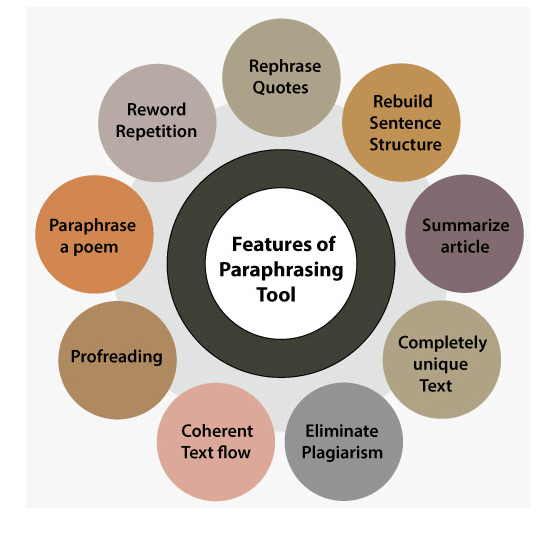Features of Paraphrasing Tool

Paraphrasing tools offer a variety of features to assist users in rewriting text effectively and efficiently. These features are designed to enhance the paraphrasing process and help users generate high-quality paraphrases while retaining the original meaning. Here are some common features of paraphrasing tools:
Text Input: Paraphrasing tools typically provide a text input interface where users can enter the text they want to paraphrase. This can be done by typing directly into the tool or by copying and pasting text from another source, such as a document or website.
Automatic Paraphrasing: The core feature of a paraphrasing tool is its ability to automatically rewrite text to produce paraphrased versions. Paraphrasing tools use algorithms and natural language processing techniques to analyze the input text and generate alternative versions with different wording and sentence structures.
Synonym Replacement: Paraphrasing tools often include databases of synonyms and related words that they use to replace words and phrases in the original text. This helps to create paraphrases that are different from the original but retain the same meaning.
Sentence Rewriting: In addition to replacing individual words, paraphrasing tools may also rewrite entire sentences to produce alternative versions of the text. This can involve changing the grammatical structure, rearranging the order of words, or using different phrasing while preserving the original meaning.
Customization Options: Many paraphrasing tools offer customization options that allow users to control various aspects of the paraphrasing process. This may include adjusting parameters such as the level of rewriting, the complexity of the output text, and the formality of language.
Grammar and Style Checking: Some paraphrasing tools include features for checking and correcting grammar, punctuation, and writing style. These features help to improve the readability and coherence of the paraphrased text by identifying and fixing errors such as spelling mistakes and grammatical inconsistencies.
Plagiarism Detection: Paraphrasing tools may include built-in plagiarism detection features that allow users to check the originality of the paraphrased text. This helps users ensure that their paraphrases are sufficiently different from the original source and do not inadvertently plagiarize.
Output Options: Paraphrasing tools typically provide various output options for the paraphrased text. Users may be able to view the paraphrased text directly within the tool, download it as a text file, or copy it to the clipboard for use in other applications.
User Feedback: Some paraphrasing tools incorporate user feedback mechanisms that allow users to rate the quality of paraphrases or provide feedback on specific suggestions. This helps to improve the performance of the tool over time by incorporating user input into the algorithm.
Overall, paraphrasing tools offer a range of features designed to assist users in rewriting text effectively and efficiently. By leveraging these features, users can generate high-quality paraphrases that meet their specific needs while saving time and effort in the writing process.
Thank you,